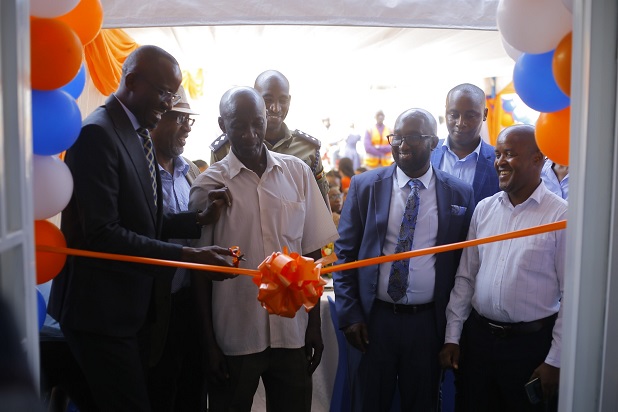During March, as many countries in Africa imposed necessary restrictions on social distancing, a significant majority of consumers turned to contactless card payments for necessary purchases. 70 percent of respondents in the Middle East & Africa say they are now using contactless payment, citing safety and cleanliness as key drivers. Consumer polling by Mastercard, studying changing consumer behaviors in 19 countries around the world, paints a picture of accelerated and sustained contactless adoption.
The act of running to the store for eggs, medicine and other necessities has changed dramatically. Shoppers around the world have had to adjust to social distancing measures and other new challenges when buying everyday supplies for their families and loved ones. This shift in consumer behavior is particularly clear at checkout, as people express a desire for contactless and voice concerns over cleanliness and safety at the point of sale, according to the new Mastercard study.
In fact, findings from respondents in the Middle East & Africa show:
Contactless Move to Top of Wallet – Perceptions of safety and convenience have spurred a preference for contactless cards and reminded consumers of the convenience of tapping on a global scale. Six in ten (61 percent) respondents in the region have swapped out their top-of-wallet card for one that offers contactless.
Confidence in Contactless – The global disruption has led to increased concern from consumers on cash usage and positive perceptions towards contactless due to the peace of mind that it provides. 70 percent of respondents in the region say they are now using some form of contactless payment. Amidst the pandemic, 84 percent agreed that contactless is a cleaner way to pay. Furthermore, 79 percent said contactless payment methods have been easy to adopt. Contactless payments are up to 10 times faster than other in-person payment methods, enabling customers to get in and out of stores faster.
Contactless is Here to Stay – We are in a sustained period in which consumers are making purchases in a very focused way; it’s reinforcing contactless use in markets where adoption is more mature, and it’s stimulating use in newer markets. This trend appears to be here to stay. Nearly two in three respondents (64 percent) confirmed that the pandemic has led them to use less cash, and 81 percent said they will continue to use contactless post-pandemic.
“Social distancing does not just concern people; it includes publicly shared devices like point of sale terminals and checkout counters. At a time of heightened sensitivity to personal contact, consumers are adopting contactless as part of their new ‘no-contact’ behavior,” said Adam Jones, Area Business Head, East Africa. “Contactless cards offer consumers a safer, cleaner way to pay, speed at checkout, and control over physical contact at this critical time and our partners across the region are evolving to match the delivery of this global trend to their customers in market.”
“Contactless is already deeply engrained behavior in many countries. But as a faster, safer way to pay, consumer adoption has been advanced by the COVID-19 pandemic,” added Jones. “Our data shows that contactless technologies give peace-of-mind to consumers and merchants alike, and it’s clear that the change that we are witnessing in consumer behavior is here to stay.”
Contactless Tipping Point
Mastercard has been spearheading the worldwide shift to contactless for years, championing the simple, safe and fast way to pay. As consumers increasingly seek out ways to quickly get in and out of stores without touching terminals, Mastercard data reveals 40 percent growth in contactless transactions globally in in the first quarter of 20201. Further, 80 percent of contactless transactions are under $25, a range that is typically dominated by cash.
Just last month, Mastercard announced commitments to increase contactless payment limits in more than 50 countries worldwide. In East Africa, Mastercard has worked closely with its partners such as KCB Bank, Equity Bank and DTB to raise the Cardholder Verification Method (CVM) limits by as much as 40 percent in Kenya, Tanzania, and Uganda as they work towards ensuring more of their customers have access to this solution.
“At DTB, all our Mastercard debit and credit cards have been enabled for tap-and-go transactions. We have gone a step further to educate consumers on the ease and benefits of executing contactless transactions especially in this period where there is a lot of emphasis on limiting physical interaction to combat COVID-19,” Farouk Khimji, Head of Products & Marketing, DTB Kenya.
Known for driving innovative solutions and putting their customers first, the three banks are exploring all payment solutions; from electronic payments to contactless solutions to ensure their customers remain safe at this time. Limit increases were part of Mastercard’s global effort to make sure consumers, merchants and small businesses have the resources to safely pay, receive payment, and maintain operations during the COVID-19 crisis.
“In the past few weeks, Equity has initiated several solutions to ensure that our customers have the right and convenient payment options to suit their lifestyle as they continue to navigate during the current challenges brought about by COVID-19. Amidst the global rise in the use of contactless payments, we are pleased to drive its adoption to our customers and Kenyans. To complement this, we have activated all our 21,000 Point of Sale machines at merchant locations countrywide to accept contactless payments, enabling a faster check out process with contactless,” said Gerald Warui, Managing Director, Equity Bank Kenya.
While countries worldwide are at different stages of contactless card deployment and usage for daily shopping habits, Mastercard’s insights on grocery and pharmacy trends – two areas where many day-to-day essentials are being purchased – showed that nearly all regions experienced significant spikes in February and March. Further, reinforcing changing behaviors and consumer checkout preferences, Mastercard saw the number of contactless transactions at grocery stores and pharmacies in the Middle East & Africa grow four times as fast as non-contactless transactions.





